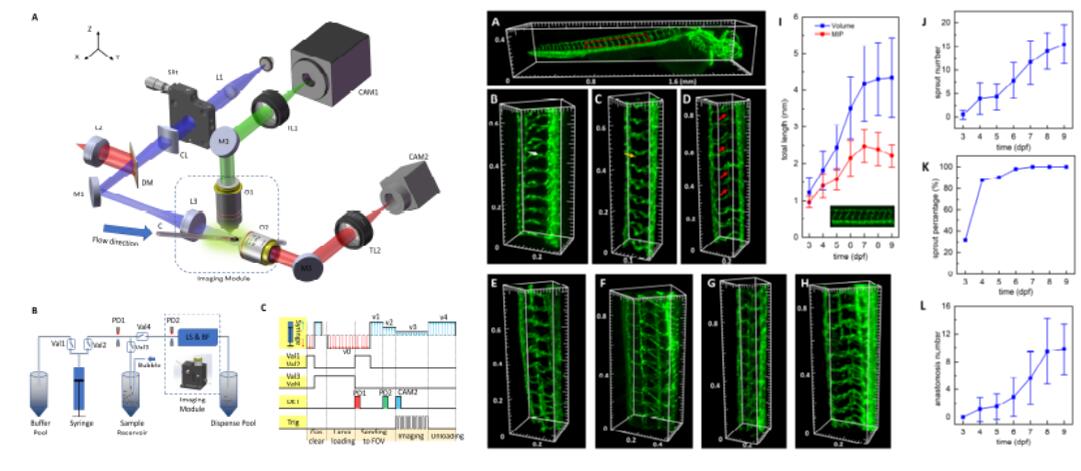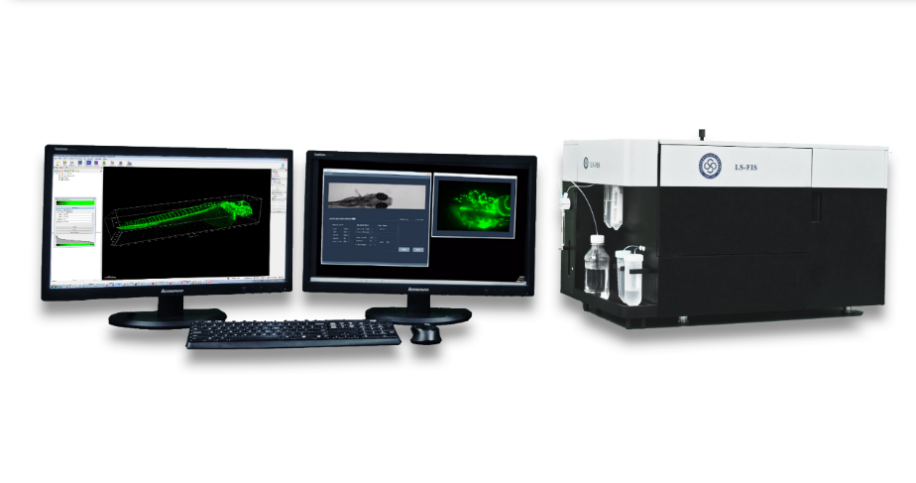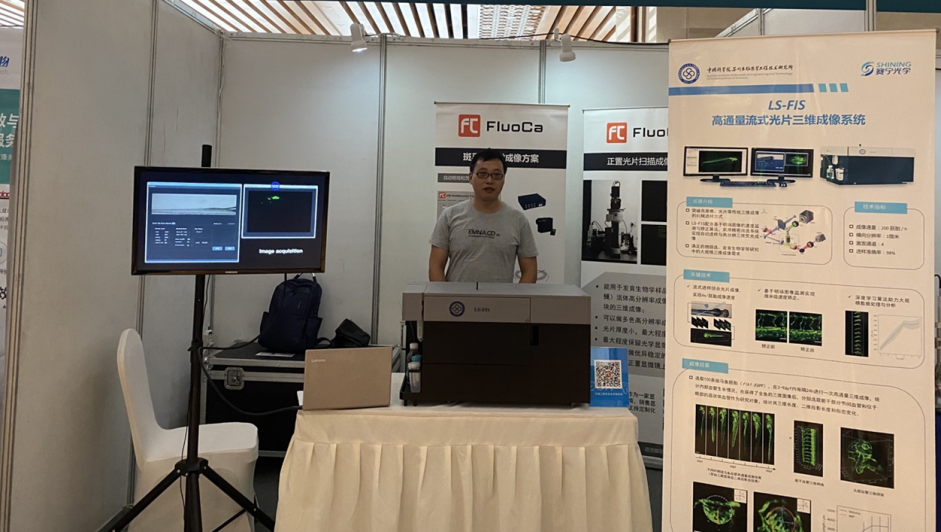Zebrafish has been widely used in developmental biology, immunology, neurobiology, and drug screening, showing significant superiority in large-scale heterogeneous studies of development and drug effects due to its small size, short life cycle, high fecundity, and low cost. However, practical experiment processes rely heavily on hand manipulation and imaging under traditional microscopes with large workloads but very low efficiency, which limits the utilization of zebrafish in large-scale analysis.
To address these bottlenecks, researchers at the Suzhou Institute of Biomedical Engineering and Technology (SIBET) and Shanghai Institute of Nutrition and Health (SINH) of the Chinese Academy of Sciences (CAS) have developed a light-sheet flow imaging system (LS-FIS) for high-throughput three-dimensional (3D) imaging of zebrafish based on flow light sheet.
Light-sheet microscopy is a 3D imaging method with low phototoxicity and fast imaging speed. However, current light sheet imaging requires a complex sample preparation process for zebrafish imaging. Moreover, due to the limited field-of-view, 3D imaging of whole embryos often requires multi-region imaging and stitching, which severely limits the imaging flux of this technique.
Through a smart design of fluid flow and optical coupling system with precise sampling control timing and 3D reconstruction algorithms, the researchers combined flow imaging technology with light sheet illumination to achieve high throughput 3D imaging of 200 embryos/hour.
LS-FIS was applied to study the development of blood vessels in the trunk and head of zebrafish. 100 transgenic zebrafish Tg(kdrl: EGFP), whose vascular endothelial cells labeled with green fluorescent protein were imaged daily with LS-FIS from three to nine days post-fertilization for demonstration.
Over 500 3D images of whole embryonic zebrafish were obtained, which is the first known report of large-scale whole-fish 3D imaging data.
The researchers measured and analyzed the length of intersegmental vessels and changes in the morphology of the hyaloid vascular with the obtained 3D structures. Results show significant heterogeneity of the trunk vessel development but less heterogeneity of the hyaloid vascular.
This work entitled "Heterogeneities of zebrafish vasculature development studied by a high throughput light-sheet flow imaging system" was published in Biomedical Optics Express.

In addition, the prototype of LS-FIS has been validated for several iterations for better stability, appearance, and easy-to-use software interface. It was also tested in the SINH and the Institute of Neuroscience of CAS and proved to have a good imaging capability and versatile usage.
The researchers further developed relevant image analysis and processing algorithms to deal with large amounts of 3D image data captured by LS-FIS. For zebrafish intersegmental blood vessels, they proposed a 3D convolutional neural network with multiscale features (MS-3D U-Net) to achieve segmentation and recognition of 3D vascular. By multiscale feature learning and an optimized loss function based on a hard attention mechanism, MS-3D U-net achieved an accuracy of over 90% (AUC value).
Based on MS-3D U-Net, they automatically segmented and measured the 3D image data of zebrafish embryos that were continuously observed for 24 hours and plotted the developmental curves of intersegmental vessels and dorsal longitudinal anastomosing vessels.
Relevant results entitled "Optimized U-Net model for 3D light-sheet image segmentation of zebrafish trunk vessels" was also published in Biomedical Optics Express.
This study was supported by the National Natural Science Foundation of China, and the Suzhou National New & Hi-Tech Industrial Development Zone Leading Talents projects.








